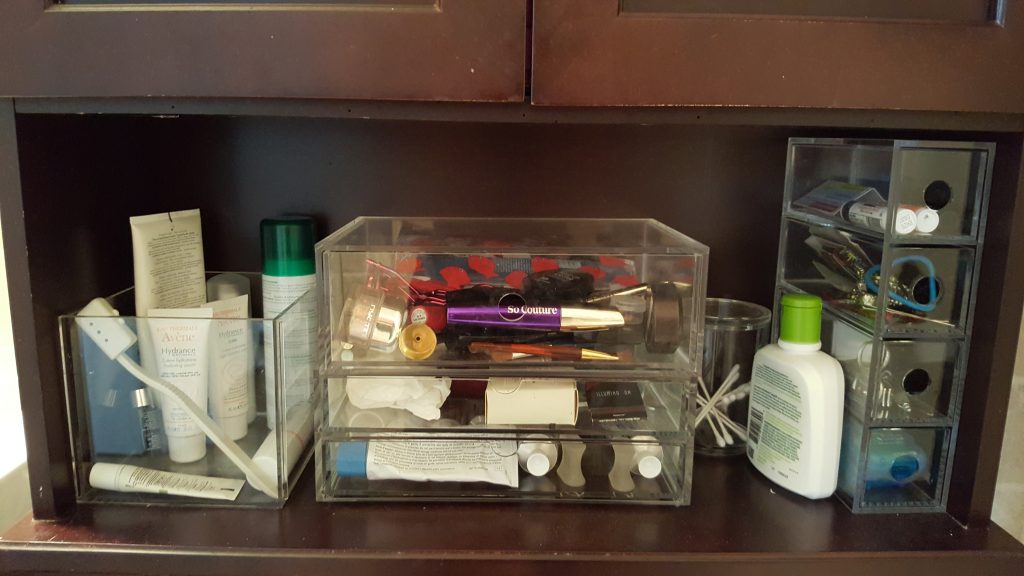My bathroom has a unit built over the toilet with 1 open shelf and a cupboard with doors. After accidentally knocking a few things into the toilet, I decided I needed a better storage solution. I also felt nervous when guests came over that they might accidentally bump something off the shelf into you-know-where…It was easy to do.
I needed something that was closed or contained, like a drawer or a box, to store my items. Something that could be accessed and cleaned easily. I bought a few acrylic boxes from Muji to start. I liked them so much I bought 5 more.
Once everything was all neat and organized in their respective boxes, I immediately gained some benefits. I also made some rather interesting insights about myself.

Daily use items are in the box on the left for quick access. Drawers on the right contain lip products, hair products, items for nail care, and dental care.
Turns out, I was a bathroom hoarder! With my former “organization” method, I could never really see what I had. I didn’t realize that I kept buying the same products because I thought I was running out only to discover I actually had multiple quantities of that particular item. Bathroom stuff gets expensive!
One of the worst parts was that some items were wasted because I didn’t use them before the expiration date, either because I didn’t see the item or had already bought a replacement.
Overall, I gained a number of benefits from the new system.
- Inventory was easy. I quickly noticed a few things missing that I always like to have around, like band-aids and ibuprofen. Now that each item has a specific box, I can assess what needs to be replaced or replenished.
- Cleaning up is quick and easy because I know exactly where to put things.
- It’s fast to locate things. This is definitely a perk when dealing with injuries or getting ready. I want my time focused on getting ready, not hunting around for things.
- No more products tumbling into the toilet or onto the floor.
- It’s space efficient.
- I made people happy when I passed along the nice bathroom products that I wasn’t going to use. I felt good because I knew the products would get used up and enjoyed before expiring.
Key Organizing Tip: Everything needs a home. Read more about it here.
